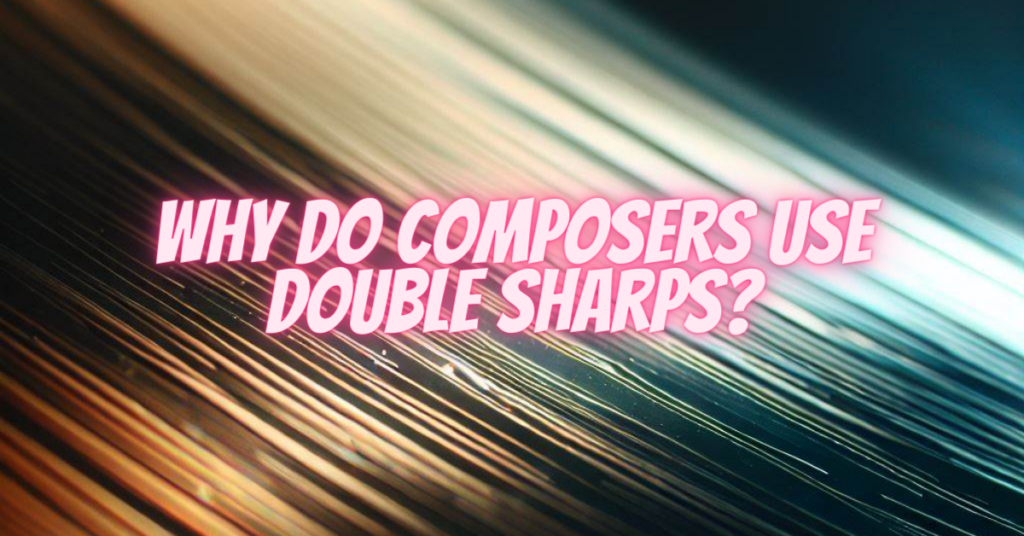In the intricate world of music theory, composers often navigate the subtle nuances of the pitch to create expressive and captivating compositions. Among the various symbols used to represent pitch alterations, the double sharp holds a unique place. Why do composers employ this enigmatic symbol, and what purpose does it serve in the realm of musical expression? In this article, we will explore the fascinating realm of double sharps, shedding light on their significance and the situations that call for their use in music composition.
1. Chromaticism and Key Signatures:
In traditional Western music notation, each note can have different alterations to its pitch, denoted by sharps (#) and flats (♭). Double sharps (𝄪) come into play when composers need to raise a note by two half steps instead of the usual one. This is particularly relevant in chromatic passages, where notes outside the diatonic scale are utilized to create tension, color, and movement in the music. By using double sharps, composers can precisely indicate the pitch they intend, ensuring accuracy in performance.
2. Enhancing Harmonic Progressions:
In harmonically complex compositions, composers may utilize double sharps to enhance specific harmonic progressions. By employing notes that are a whole step above the natural pitch, a composer can create dissonance, leading to a richer resolution. This heightened tension and release contribute to the emotional depth of the composition, adding complexity and interest to the harmonic structure.
3. Voice Leading and Counterpoint:
In polyphonic music, such as fugues and canons, composers employ double sharps to facilitate smooth voice leading and intricate counterpoint. By using double sharps, composers can create melodic lines that seamlessly transition between notes, enhancing the overall texture of the composition. This meticulous attention to voice leading is crucial for creating harmonically rich and engaging musical experiences.
4. Modulation and Key Changes:
Double sharps are essential when modulating to distant keys or utilizing unconventional scales. In compositions that explore various tonal centers, composers might introduce notes altered by double sharps to establish new tonalities effectively. By using these altered notes, composers can smoothly transition between different keys, adding depth and complexity to the harmonic progression.
5. Historical and Cultural Context:
While double sharps are prevalent in Western classical music, their use varies across different musical traditions and historical periods. Some non-Western musical systems have their own unique symbols to denote microtonal alterations, highlighting the diversity of musical notation worldwide. Understanding the historical and cultural context of a composition can provide valuable insights into the composer’s choice of using double sharps or other pitch alterations.
Conclusion
The use of double sharps in music composition is a testament to the precision and artistry of composers. By incorporating these nuanced symbols, composers can create harmonically rich, emotionally charged, and intellectually stimulating musical pieces. Double sharps, along with other pitch alterations, offer composers a vast palette of expressive possibilities, enabling them to craft intricate, multidimensional works that captivate audiences and stand the test of time. As musicians and listeners alike, appreciating the subtleties of these symbols enriches our understanding of the depth and complexity inherent in the world of music composition.


